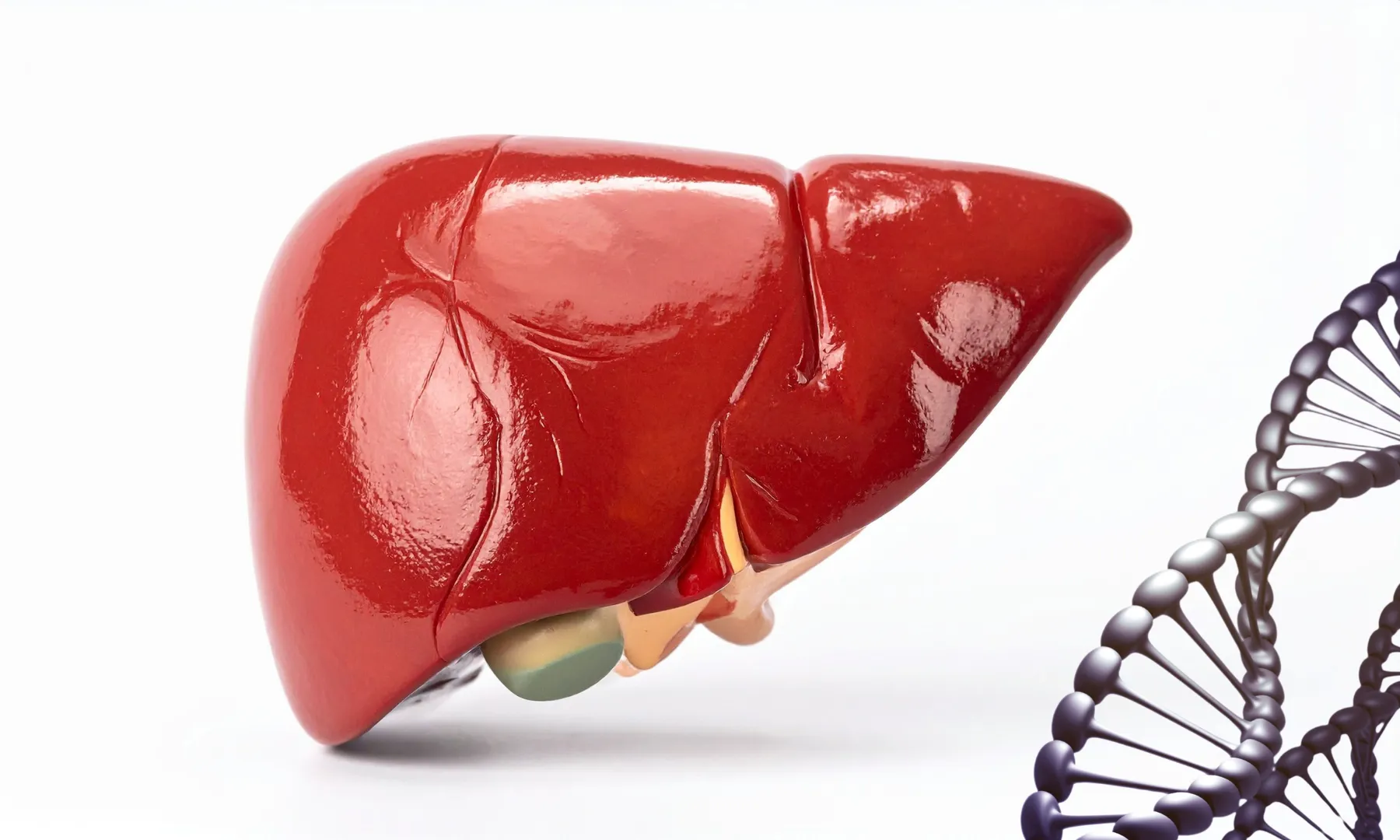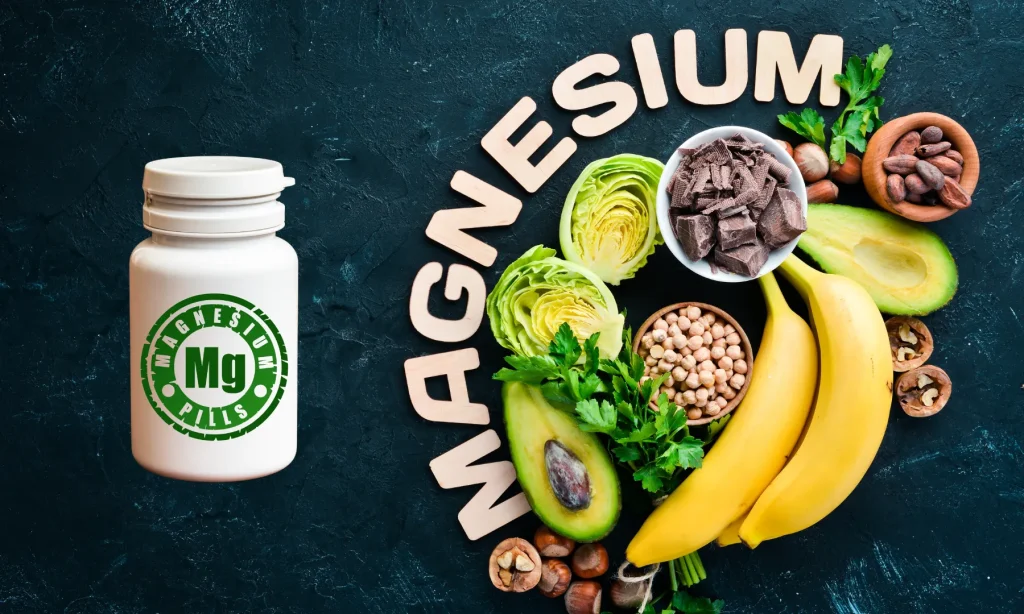
Ever had two patients on the same “refresh” protocol, one thriving, the other feeling like they got flattened by a freight train? Welcome to the wild world of nutrigenomics detoxification, where your genetic code can turn a gentle cleanse into a wild rollercoaster (or, let’s be honest, a total flop).
Here’s the uncomfortable truth: There’s no one-size-fits-all blueprint for refresh. Some folks breeze through green smoothies and broccoli sprouts, while others battle migraines or skin flare-ups. Why? It comes down to the DNA language written in every cell, specifically, the genes that build your internal clean-up crew. Genes like CYP450, GST, and COMT are the unsung heroes (or troublemakers) behind the scenes, determining who clears toxins like a pro, who’s stuck with chemical clutter, and who might need less or more of particular nutrients to tip the scales back to balance.
If you’re a practitioner aiming to dive deeper than quick-fix fads and create truly personalized nutrition recommendations, you’re in precisely the right place. Together, we’ll peel back the curtain on the science, real-life stories, and practical tips for making nutrigenomics detoxification work (the sane way) in your day-to-day practice. Ready to decode your clients’ refresh quirks? Let’s get messy and find clarity on the other side.
Key Takeaways
Nutrigenomics detoxification reveals that genetic variations in enzymes like CYP450, GST, and COMT shape each person’s ability to clear toxins and handle nutrition plans.
Personalizing detox protocols based on genetic testing and real-world lab markers helps prevent adverse reactions and boosts client outcomes.
Cruciferous vegetables, like broccoli sprouts, are especially beneficial for individuals with GST gene deletions, supporting effective detoxification.
Balancing methyl donors and antioxidants to match individual COMT genotypes and stress levels is key for optimal hormonal and neurological health.
Detoxification programs should always support Phase II pathways before upregulating Phase I enzymes to avoid the infamous “detox flu.”
Ongoing adjustments and careful monitoring ensure nutrigenomics detoxification protocols stay patient-centered and effective over time.
Table of Contents
The Genetic Architecture of Detoxification
Genetic testing is like seeing the blueprints for your patient’s refresh machinery. Imagine rolling up the hood on an engine; some folks have turbocharged parts, others are missing a few bolts. The main players? Your Phase I and II detox genes: the CYP450 family, GST, and COMT, all of them bosses, all with their own quirks. Understanding the molecular mechanisms and pathways of nutrigenomic detoxification helps practitioners tailor protocols to each person’s unique biochemical blueprint.
Phase I Enzymes: CYP450 Variants
Let’s talk about the gatekeepers: CYP450 enzymes, think of them as your body’s first bouncers at the chemical club.
Within this family, variants like CYP1A2, CYP2D6, and CYP2C19 can dramatically alter how quickly folks metabolize caffeine, medications, and a parade of everyday toxins (ever seen someone wired all night from one tiny espresso? Blame their slow CYP1A2 gene). These CYP450 polymorphisms and nutritional interactions are pivotal. Nutrients such as flavonoids, B vitamins, and antioxidants can modulate enzyme activity and protect against excessive oxidative stress. Clinical SNPs, especially those infamous deletions or slow/fast metabolizer genotypes, can mean meds that work great for one patient will knock another flat, or a refresh plan that’s gentle for most will send sensitive types into overdrive.
Fun story: I once consulted for a woman who insisted painkillers never worked for her. Her CYP2D6 genotype predicted ultra-fast clearance; she needed alternative strategies, not bigger doses or being told “it’s all in your head.” Genomics to the rescue.
CYP variants not only change drug responses but also impact how toxins are activated for clearance. But, and this is a big one, speeding up Phase I (without proper detox gene nutrient cofactors and Phase II support) can leave your patient with halfway-metabolized, even nastier compounds sitting in limbo. And that can spell trouble: headaches, rashes, insomnia… the infamous refresh “backfire.”
Phase II Enzymes: GST and Glutathione Conjugation
Now, onto the cleanup crew, your GST (Glutathione S-transferases). GST enzymes essentially sweep up the mess made by Phase I and escort these toxic “bad boys” out the door.
But here’s the hitch: about half of us have a gene deletion (GSTM1 or GSTT1 “null”). This isn’t rare: it’s almost like nature handed out flip coins. If you’ve seen patients with odd chemical sensitivities or recurring fatigue, check their GST status when these genes are MIA; the body’s ability to neutralize toxins plummets, raising vulnerability to oxidative stress. This is where GST gene detox nutrigenomics truly excels; identifying missing or underperforming variants enables precise nutritional interventions.
Personal anecdote: One client, a painter with chronic headaches, turned out to be GSTM1 null. Once we stacked sulforaphane-rich foods (hello, broccoli sprouts) and targeted antioxidants, her signs started melting away.
GST nulls are the canaries in the coal mine; they need extra nutritional firepower from tailored antioxidants, sulfur donors, and nutrient cofactors for detox genes to keep clearance efficient.
COMT’s Role in Hormone Refresh
COMT is the hormone wrangler and neurotransmitter referee. Its job? To methylate and safely dispose of leftover estrogens and stress chemicals (like dopamine and adrenaline). These COMT and methylation interactions determine how well clients handle hormonal and emotional stress.
A sluggish COMT (thank you, Val158Met SNPs) means leftover hormones stick around, causing anxiety, mood swings, and a ticking time bomb for estrogen-driven issues. Add in a high-methyl donor protocol and, oops, some clients swing into “wired but tired” mode, headaches, or hormonal mayhem.
Case in point: a mid-30s nurse walked into my office, visibly agitated, sweaty, and irritable. High stress, slow COMT, and she was slugging back a high-dose methylated B supplement. We dialed it back, swapped in magnesium, and watched her signs recede… sometimes less is more, especially in sensitive genotypes.
Bottom line? Your clients’ Phase I and II detox genes decide whether detoxification is a well-choreographed ballet or a toddler’s food fight, and knowing their status through nutrigenomics detoxification lets you call the shots.

Nutrients that Support Detox Gene Function
Genes may set the playing field, but nutrients are the players that bring their A-game (or bench themselves, if picked poorly). You can’t change a client’s DNA, but you absolutely can coach enzyme performance through diet and supplements. This is where nutrigenomic detox testing earns its keep, helping you pinpoint which pathways need more nutritional muscle before you ever reach for a supplement bottle.
Cruciferous Compounds and GST Activation
There’s a reason everyone and their mother touts broccoli sprouts: sulforaphane (the signature isothiocyanate) is a GST superstar. These cruciferous heroes trigger the Nrf2 pathway, dial up glutathione production, and help GST nulls pick up the slack. Broccoli, kale, mustard seed —it’s not just health nut hype; it’s the sulforaphane detox pathway in full swing.
Researchers found that GSTM1-null individuals showed larger jumps in refresh markers after consuming broccoli sprouts than GST-positive individuals. If your patient’s GST genes are playing hide-and-seek, consider adding crucifers to their diet and supplementing with a bit of extra selenium and NAC for even better results.
Quick pro tip: Rotate your sources – raw broccoli sprouts one week, sautéed kale the next, and finish with a dash of spicy mustard for an isothiocyanate boost. It’s a simple way to keep taste buds engaged and antioxidant engines roaring.
Methyl Donors and COMT Pathways
Supporting methylation is a balancing act, not a game of “more is better.” Folate, B12, and betaine (TMG) form the essential methylation trio; think of them as superheroes joining forces, but only effective if dosed for the client’s underlying speed. This is the art of methyl donors detox genomics: customizing nutrient support based on how COMT, MTHFR, and related genes regulate methyl flow.
Here’s my best practical matrix:
COMT Genotype | Methylation Speed | Suggested Support |
|---|---|---|
Val/Val | Fast | Balanced methyl donors |
Met/Met | Slow | Focus on co-factors, go easy on methyl donors |
Val/Met | Moderate | Personalize per stress/estrogen burden |
Saw a case, female, slow COMT, high estrogen load, and headaches every luteal phase. Too much methyl support kept tripping her up. We switched to magnesium (calming) and gentle doses of active B12/folate instead of megadosing. Like flipping a hormonal light switch, signs faded, energy and mood steadied.
The magic isn’t in the supplement bottle; it’s in the dose and timing, personalized for genotype and need with the use of DNA-based supplementation.
Antioxidants for Redox Balance
When refresh stutters, oxidative stress has a field day. That’s where Vitamin C, E, CoQ10, NAC, and selenium step in. Not only do these antioxidants mop up free radicals, but they support gene expression and keep the whole refresh system humming.
Polyphenols, especially quercetin and curcumin, also have a knack for boosting genes that promote health, nudging your whole cellular ecosystem toward resilience. Real talk: if a patient eats the SAD diet (you know the one), just teaching them to enjoy a smoothie packed with berries, citrus, dark greens, and a sprinkle of turmeric can be downright transformative.
This is true personalized medicine, no guesswork, just the right dietary or supplemental tool for the job, guided by nutrigenomic detox testing and the genes that make every protocol unique.

Clinical Interpretation for Practitioners
Alright, so you’ve got the GenomicInsight™ printout and your patient’s food log… now what? This is where it gets fun, using nutrigenomics to make clinical decisions that don’t backfire.
SNP Reports for Refresh Genes
Interpreting SNPs is where practitioners go from “gene curious” to “gene savvy.” Most clinical panels highlight common variants in GST (nulls or variants), the CYP450 family (naming slow/fast metabolizers), and COMT (Val158Met for methylation status). Don’t just circle results and call it a day: layer in enzyme efficiency, cofactor needs, and exposure risks.
Here’s a practice pearl: always back up genetic predictions with functionals, think GSH: GSSG ratio, homocysteine, and urinary organic acids. That’s how you distinguish between “theoretical risk” and “real-world bottleneck.”
Case Applications: Hormonal or Chemical Overload
Let’s color in the lines with a couple of real-world cases:
Case 1: The Hormonal See-Saw
A 37-year-old with monthly migraines, anxiety, and a history of slow COMT. She’s sensitive to high-dose methyl supplements, craves carbs during PMS, and gets night sweats. Solution? Emphasized magnesium, pulled back on methyl donors, and used cruciferous blends to gently push Phase II without flooding her system. Migraines dropped to once a quarter, mood steadied, and energy came back.
Case 2: The Chemical Sponge
A mid-40s painter, GSTM1 and GSTT1 both null, exposed daily to paints and solvents. She was constantly tired, foggy, and her skin was rebelling. We loaded her diet with broccoli sprouts, applied sulforaphane supplements (timed for days off work), and encouraged selenium plus N-acetylcysteine. Result? Fatigue began to ease, her reflex tests improved, and her headaches became rare.
These stories underscore a vital point: knowing the genome only works if you adjust the plan, pace changes, and track responses. It’s how DNA becomes a clinical tool, not a random trivia fact.
Avoiding Refresh Overstimulation
Here’s the most common trap: pushing Phase I too hard, too fast (heavy on caffeine, curcumin, or supplement-based CYP450 upregulation) without first preparing the body’s Phase II backup. That’s when patients get the infamous “refresh flu”, think headaches, rashes, insomnia, or even mood crashes. It’s not heroics, it’s havoc.
First step? Stabilize mitochondria (nutrition, rest, gentle antioxidants). Next, bolster Phase II support with crucifers, sulfur, and methylation cofactors. Only after that, slowly nudge Phase I with targeted nutrients or lifestyle tweaks. Think of it as setting up an assembly line: all the sections need to work in concert.
Clinical red flags for overstimulation: if clients report feeling worse, not better, after starting a refresh protocol, pause and dial it back. Their genome is waving a warning flag. Sometimes, slow and steady really does win the race.
Final Thoughts: Practitioner Insights on Nutrigenomic Detoxification
More refresh isn’t always better; sometimes it’s a recipe for expensive headaches and hard lessons. Obtain the genotype and cross-check it with real-world markers, including lab panels, clinical patterns, and symptom diaries. Think stepwise: stabilize, support, then stimulate, never the other way around.
If you’re serious about mastering this discipline, consider advancing your expertise through continuing education with the Integrative Genomics Program by Elite Gene Labs. This advanced practitioner program goes far beyond textbook genetics; it teaches you how to clinically interpret genomic data, connect SNPs to biochemical pathways, and design actionable nutrition and detoxification strategies tailored to each patient’s unique gene profile. You’ll learn how to integrate nutrigenomic testing into real-world clinical protocols, translate lab reports into therapeutic decisions, and build confidence in offering accurate precision nutrition as part of your practice.
Frequently Asked Questions
What is nutrigenomics detoxification?
Nutrigenomics detoxification is the science of using your genes to personalize detox strategies. It examines how genetic variants in key detox genes like CYP450, GST, and COMT, affect your ability to process and eliminate toxins. By tailoring nutrition and supplements to your genetic profile, practitioners can improve toxin clearance, reduce side effects, and enhance long-term metabolic balance.
How do genetic differences influence the body’s detoxification process?
Genetic differences determine how efficiently enzymes break down and remove toxins. Variants in detox genes such as CYP450, GSTM1, GSTT1, and COMT affect how quickly your body processes medications, hormones, and environmental chemicals. Understanding these differences helps explain why one person tolerates detox supplements well while another experiences fatigue or irritability.
What nutrients are essential for supporting detoxification genes?
Nutrients play a major role in activating detox enzymes. Cruciferous vegetables like broccoli and kale boost the GST pathway through sulforaphane. Methyl donors such as folate, vitamin B12, and betaine, support COMT and methylation balance. Antioxidants like vitamin C, NAC, and selenium protect cells and optimize overall detox gene function.
What are common signs of detoxification overload in nutrigenomic programs?
When detoxification is overstimulated or unbalanced, symptoms may include headaches, rashes, brain fog, irritability, or insomnia. These often occur when Phase I enzymes (CYP450) outpace Phase II (GST, COMT) capacity. Adjusting nutrient cofactors and pacing interventions can help restore equilibrium.
Can nutrigenomics detoxification help with chemical sensitivities or hormonal imbalances?
Yes. Genetic testing can reveal slow or impaired detox pathways linked to chemical sensitivities, estrogen dominance, or stress-related hormone imbalances. Personalized nutrition targeting genes like GST and COMT, can help rebalance detox efficiency and support hormone metabolism safely and effectively.
What is the role of methylation in detoxification?
Methylation is a key biochemical process that helps neutralize and eliminate toxins, hormones, and neurotransmitters. The COMT gene regulates this process, and variants can alter how quickly the body clears stress hormones and estrogens. Supporting methylation with balanced B vitamins and magnesium is critical for safe detoxification.
How does nutrigenomic detox testing work?
Nutrigenomic detox testing analyzes genes involved in detoxification such as CYP450, GST, and COMT, to identify enzyme strengths and weaknesses. Practitioners use these results to design individualized nutrition, supplement, and lifestyle protocols that align with each person’s genetic detox profile.
What lifestyle factors can enhance nutrigenomic detoxification results?
A nutrient-dense diet rich in antioxidants, cruciferous vegetables, and hydration supports detox efficiency. Limiting alcohol, reducing chemical exposure, improving sleep, and managing stress all strengthen detox pathways. Combined with gene-informed nutrition, these habits optimize long-term metabolic resilience.
How can practitioners learn to apply nutrigenomics detoxification clinically?
Clinicians can deepen their expertise through specialized training such as the Integrative Genomics Program by Elite Gene Labs. This program teaches practitioners how to interpret detox-related genetic data, connect it to clinical outcomes, and create precision nutrition plans grounded in functional genomics.
Who benefits most from nutrigenomics detoxification?
Individuals with chronic fatigue, chemical sensitivity, hormone imbalance, or slow medication metabolism often benefit the most. By uncovering genetic bottlenecks in detox pathways, practitioners can provide targeted support to restore balance, reduce inflammation, and enhance overall wellness.
References:
Raimundo, A. R., de Souza, V. S., Milan, C. A., de Oliveira, R. S., de Lima, L. G., de Andrade, V. G., … & de Andrade, R. M. (2022). Comparative frequency distribution of glutathione S-transferase mu and theta polymorphism in cancer patients and healthy individuals: A meta-analysis. Journal of Genetic Engineering and Biotechnology, 20(1), Article 98. https://doi.org/10.1186/s43042-022-00298-6
Garza-González, E., Ramírez-Navarro, J. R., & Puente-Ponce, A. (2017). GSTT1 and GSTM1 null variants in Mestizo and Amerindian populations from northwestern Mexico. Genetics and Molecular Biology, 40(4), 522-527. https://doi.org/10.1590/1678-4685-GMB-2016-0153
Womack, C. J., Saunders, M. J., McCormack, W. P., Kurona, M., Alley, J. W., Davidheiser, S., … & Todd, K. (2012). The influence of a CYP1A2 polymorphism on the ergogenic effects of caffeine. Journal of the International Society of Sports Nutrition, 9(1), 7. https://doi.org/10.1186/1550-2783-9-7
Smith, H. S., Smith, A. R., & Maahs, J. A. (2017). CYP2D6 phenotypes are associated with adverse outcomes related to opioid medications. Pain Management, 7(5), 409-412. https://doi.org/10.2217/pmt-2017-0018
Lee, Y., Han, S., Ryu, H., & Yoon, S. (2014). Association of the Catechol-O-Methyltransferase (COMT) Val158Met polymorphism with anxiety traits: A meta-analysis. American Journal of Medical Genetics Part B: Neuropsychiatric Genetics, 165(3), 183-194. https://doi.org/10.1002/ajmg.b.32216
Hodges, R. E., & Minich, D. M. (2015). Modulation of metabolic detoxification pathways using foods and nutritional supplements in the prevention of atherosclerosis: A translational perspective. Journal of Nutrition and Metabolism, 2015, Article 760689. https://doi.org/10.1155/2015/760689
Hodges, R. E., & Minich, D. M. (2015). Modulation of metabolic detoxification pathways using foods and nutritional supplements in the prevention of atherosclerosis: A translational perspective. Journal of Nutrition and Metabolism, 2015, Article 760689. https://doi.org/10.1155/2015/760689

